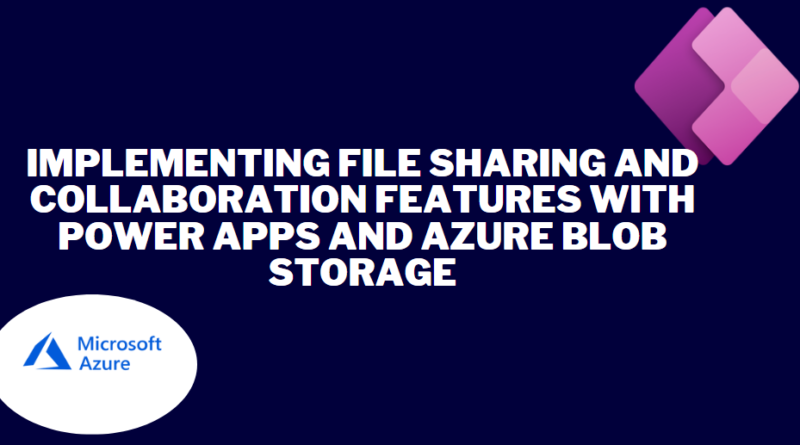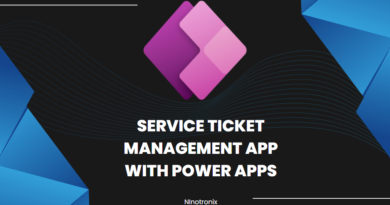Implementing file sharing and collaboration features with Power Apps and Azure Blob Storage
Implementing file sharing and collaboration features with Power Apps and Azure Blob Storage enables users to collaborate on files, share them securely, and track version history. Here’s a step-by-step guide on how to implement these features:
Step 1: Set up Azure Blob Storage Before starting, ensure that you have set up Azure Blob Storage by creating a storage account and container to store the files.
Step 2: Create a new Power App or open an existing one Open Power Apps in the browser or the Power Apps studio on your desktop. You can choose to create a new app from scratch or open an existing app to add file sharing and collaboration features.
Step 3: Add the Azure Blob Storage connector In the Power Apps studio, navigate to the “Data” tab and click on the “Add data source” button. Select the “Azure Blob Storage” connector from the list of available connectors. This adds the connector to your app, enabling interaction with Azure Blob Storage.
Step 4: Configure the Azure Blob Storage connector After adding the Azure Blob Storage connector, configure it by providing the connection string obtained from your Azure Blob Storage account. Enter the storage account name, access key, and container name you created in Azure Blob Storage. Save the configuration.
Step 5: Design the app interface Design the interface of your Power App to include elements for file sharing and collaboration. For example, you can add a file library view, user management, sharing options, and comments section.
Step 6: Implement file upload functionality To enable file upload, associate the upload button with an action. Use the “Patch” function in Power Apps to upload files to Azure Blob Storage. Configure the upload button to trigger the Patch function and specify the target container, file name, and file content. Access the file content using appropriate methods like the “AddPicture” function or any other relevant approach. This uploads the file to Azure Blob Storage.
Step 7: Implement file retrieval functionality To retrieve and display files from Azure Blob Storage, use a gallery control in Power Apps. Configure the gallery to retrieve file metadata such as name, size, and date created from Azure Blob Storage. Use the “ClearCollect” or “Collect” function to populate the gallery with the file metadata. This allows users to view the list of files stored in the file library.
Step 8: Implement file sharing functionality To enable file sharing, associate a share button within the file gallery with an action. Configure the button to trigger a sharing function that grants access to specific users or groups. You can utilize Azure Active Directory or custom user management to manage access permissions. This enables users to share files securely with selected collaborators.
Step 9: Implement file versioning and tracking To track file versions and changes, incorporate a versioning system in your Power App. You can achieve this by maintaining a separate table or collection to store version information for each file. Whenever a file is uploaded or modified, update the version history accordingly. You can display the version history in the file details view to keep track of changes.
Step 10: Implement comments and collaboration features To facilitate collaboration and discussions, add a comments section for each file. Allow users to add comments, replies, and attachments. You can use a separate data source or collection to store comments related to each file. Display the comments in a threaded format to maintain context and enable users to collaborate effectively.
Step 11: Test the functionality Thoroughly test the file sharing and collaboration features in your Power App. Upload files, ensure they are stored correctly in Azure Blob Storage, retrieve files, share them with collaborators, track version history, and test the comment and collaboration features. Validate that the system functions properly and allows users to collaborate seamlessly.
Step 12: Publish and share the Power App




